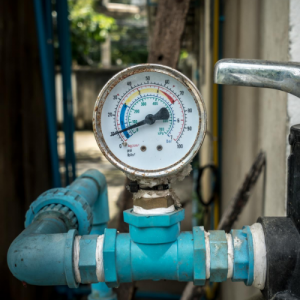Right here on the next paragraphs you can discover a lot of very good facts on the subject of 4 Ways to Troubleshoot Low Water Pressure.

Low tide pressure in your home can be an aggravating issue, influencing every little thing from showering to cleaning dishes. If you're experiencing weak water circulation, there are several feasible reasons and remedies to check out. In this overview, we'll review common reasons for low tide stress and useful actions to resolve the concern properly.
Intro to Low Tide Pressure
Low tide pressure happens when the circulation of water from your taps, showers, and other components is weaker than common. This can make everyday jobs more tough and less reliable. Understanding the causes of low tide pressure is essential to discovering the best solution.
Common Root Causes Of Low Tide Stress
Pipeline Obstructions
Over time, pipes can become clogged with natural resource, sediment, or particles, restricting the flow of water. This is an usual issue in older homes with galvanized steel pipelines.
Deterioration
Deterioration within pipes can bring about leaks and decreased water pressure. Rust accumulation can restrict water flow, specifically in maturing plumbing systems.
Faulty Pressure Regulatory Authorities
Stress regulatory authorities are accountable for keeping regular water pressure in your house. If they malfunction, it can result in low tide pressure or unequal circulation throughout your house.
Local Water System Issues
In some cases, the problem lies outside your home. Community water issues, such as main line leaks or maintenance job, can temporarily reduce water stress in your area.
How to Detect Low Tide Stress
Checking Faucets and Fixtures
Start by checking the water pressure at various faucets and fixtures throughout your home. If the problem is separated to particular areas, it might show localized troubles.
Inspecting Pipes
Examine noticeable pipes for indications of leaks, deterioration, or clogs. Take note of any type of unusual noises, such as knocking or rattling pipes, which might show concerns within the plumbing system.
Consulting with a Plumber
If you're incapable to determine the root cause of low tide pressure, think about employing a professional plumber to perform a detailed inspection. They can determine underlying problems and advise appropriate solutions.
DIY Solutions to Deal With Low Tide Stress
Cleansing Aerators and Showerheads
Mineral deposits can collect in aerators and showerheads, lowering water flow. Remove and clean up these components frequently to boost water stress.
Flushing Hot Water Heater
Debris build-up in the water heater can limit circulation and minimize effectiveness. Flushing the storage tank regularly assists eliminate sediment and preserve optimum efficiency.
Examining Stress Regulatory Authority
Make sure that the stress regulator is functioning correctly. Readjusting or replacing the regulatory authority can aid recover appropriate water pressure throughout your home.
Clearing Clogs in Piping
For small blockages, try utilizing a plumbing serpent or chemical drainpipe cleaner to clear blockages in pipelines. Be cautious when making use of chemicals and follow security guidelines.
When to Call an Expert Plumber
If do it yourself initiatives fail to settle the problem or if you believe considerable plumbing problems, it's best to look for assistance from a certified plumber. They have the proficiency and devices to attend to complicated concerns safely and properly.
Safety Nets to Maintain Water Stress
Regular Maintenance
Schedule routine maintenance for your plumbing system to avoid concerns such as corrosion, leaks, and obstructions. Resolving small troubles early can aid avoid more significant fixings later.
Setting Up a Stress Booster
Think about setting up a pressure booster pump to enhance water pressure in locations with consistently low circulation. This can be especially helpful for multi-story homes or buildings with high-demand components.
Tracking Water Use
Bear in mind water use practices and stay clear of overtaxing the plumbing system. Straightforward modifications, such as astonishing showers and washing tons, can help keep adequate water pressure.
Conclusion
Handling low tide pressure can be aggravating, but recognizing the underlying causes and carrying out suitable services can recover optimum circulation throughout your home. Whether it's cleansing aerators, evaluating pipes, or talking to a plumber, taking positive steps can ensure a stable supply of water for your everyday demands.
FOUR WAYS TO FIX LOW WATER PRESSURE NOW
Turning on a shower or faucet only to find the water comes out in a sad, slow drizzle is never a good feeling. How exactly are you supposed to wash a pan or take a quick shower when it takes 10 minutes just to rinse off a little soap? The good news is that when your water pressure is bad, there's always a cause: typically one that can be easily fixed. Here are some of the most common causes of low pressure and what you can do to fix the issue:
DEBRIS AND MINERAL DEPOSIT BUILDUPS
If you notice low water pressure from just one or two of the fixtures in your house, the problem likely has to do with debris buildup. Water is full of minerals and other debris, all of which can accumulate in your pipes and on your fixtures. This can cause a blockage that affects how much water flows through. To fix this, try filling a small plastic bag with white vinegar, and use a rubber band to hang it around your showerhead or faucet. Let the head of the fixture soak for a few hours, and the vinegar should loosen the deposits.
WATER LEAKS
Leaks are another common cause of low water pressure. If water is flowing out of your plumbing through a hole or crack before it can reach your fixture, the pressure coming out of the faucet or showerhead will be lower. A plumbing professional is your best bet for finding and repairing a leak in your water supply pipes.
Leaks are another common cause of low water pressure. If water is flowing out of your plumbing through a hole or crack before it can reach your fixture, the pressure coming out of the faucet or showerhead will be lower. A plumbing professional is your best bet for finding and repairing a leak in your water supply pipes.
A VALVE ISSUE
If you have low water pressure throughout your home, check your main shut-off valve to make sure it's completely open. You may also want to see if there's a pressure-reducing valve installed. If there is, have a plumber help you adjust the settings to get the pressure you're looking for.
OTHERS USING WATER
Believe it or not, your low water pressure could be caused by your neighbors. If you notice low pressure at certain times of day, it may be because you and the people living next to you have similar schedules - when everyone is showering at the same time, the pressure will be lower in every home. Low pressure throughout the neighborhood may also be caused by an issue with your municipal water supply. If that's the case, call the supplier to see if they're working on the issue.
https://www.rotorooter.com/blog/water-leaking/low-water-pressure-fixes/

We had been made aware of that report on 4 Ways to Troubleshoot Low Water Pressure through an associate on another web address. Feel free to take the opportunity to share this blog post if you liked it. Thanks a lot for going through it.
Click Here
Comments on “Trusted Techniques for Solving Low Water Pressure in Your Home”